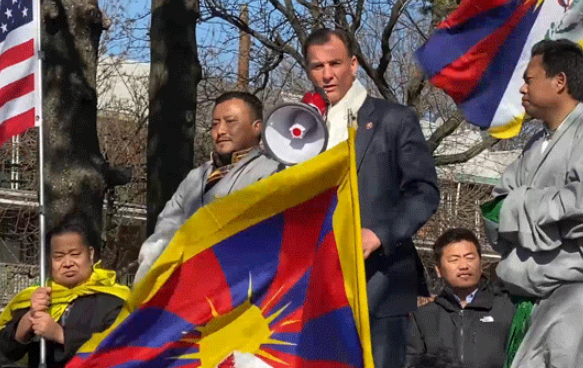An exhibit showing supposed social advances in Tibet was closed in a New York City library this weekend following ten days of protests by Tibetan activist groups and their supporters, ending a Chinese consulate-sponsored effort to show China’s rule of the once-independent Himalayan nation as beneficial.
The exhibit was removed from the Elmhurst branch of the Queens Public Library on Saturday, and plans to rotate the exhibit through six other library branches in Queens have now been stopped, sources said.
Speaking at a rally outside the library this weekend, Congressman Tom Suozzi—a member of the bipartisan U.S. Congressional Executive Commission on China—called the outcome of the ten days’ campaign “a major victory for Tibet.”
“Tibetans have been protesting, and I have personally called the library and raised concern. And now the library has made the decision to discontinue the exhibition,” said Suozzie, a Democrat and representative for New York’s 3rd District.
“In the end, truth prevails,” Suozzi said, adding, “The American people need to realize how China treats its own people—not only Tibetans but Uyghurs and students in Hong Kong.”
“We have to stand up for human rights for all people in the world. I will continue to fight for you,” Suozzi said.
Also speaking at the rally, Queens resident Ngawang Tashi expressed happiness at the library’s decision to remove the Chinese government’s exhibition on Tibet from its building.
“I am also very excited to learn that the library is planning to archive books about Tibet along with Tibetan [Buddhist] scriptures,” Tashi said.
The library’s decision to take down the exhibition show that “activism and truth are more powerful than propaganda and dictatorship,” said Dorjee Tseten, executive director of the advocacy group Students for a Free Tibet, one of the groups participating in the protest.
Other learning institutions must now be careful of efforts by China’s government to use them as platforms for propaganda, Tseten said.
Strengthened attempts by Beijing to project “soft power” image-building efforts worldwide were launched a decade ago when then President Hu Jintao gave that goal priority at a Communist Party Congress.
Since taking power in late 2012, President Xi Jinping has devoted even more attention to soft power and propaganda outreach, ordering state media to tell a positive story of a rising China and permitting Chinese diplomats to use social media to attack Beijing’s critics.

